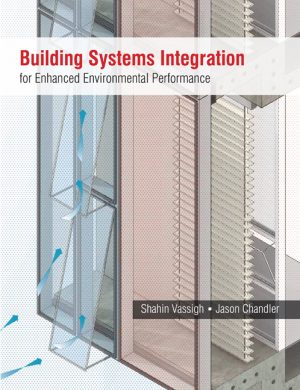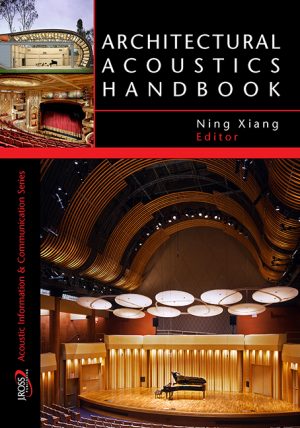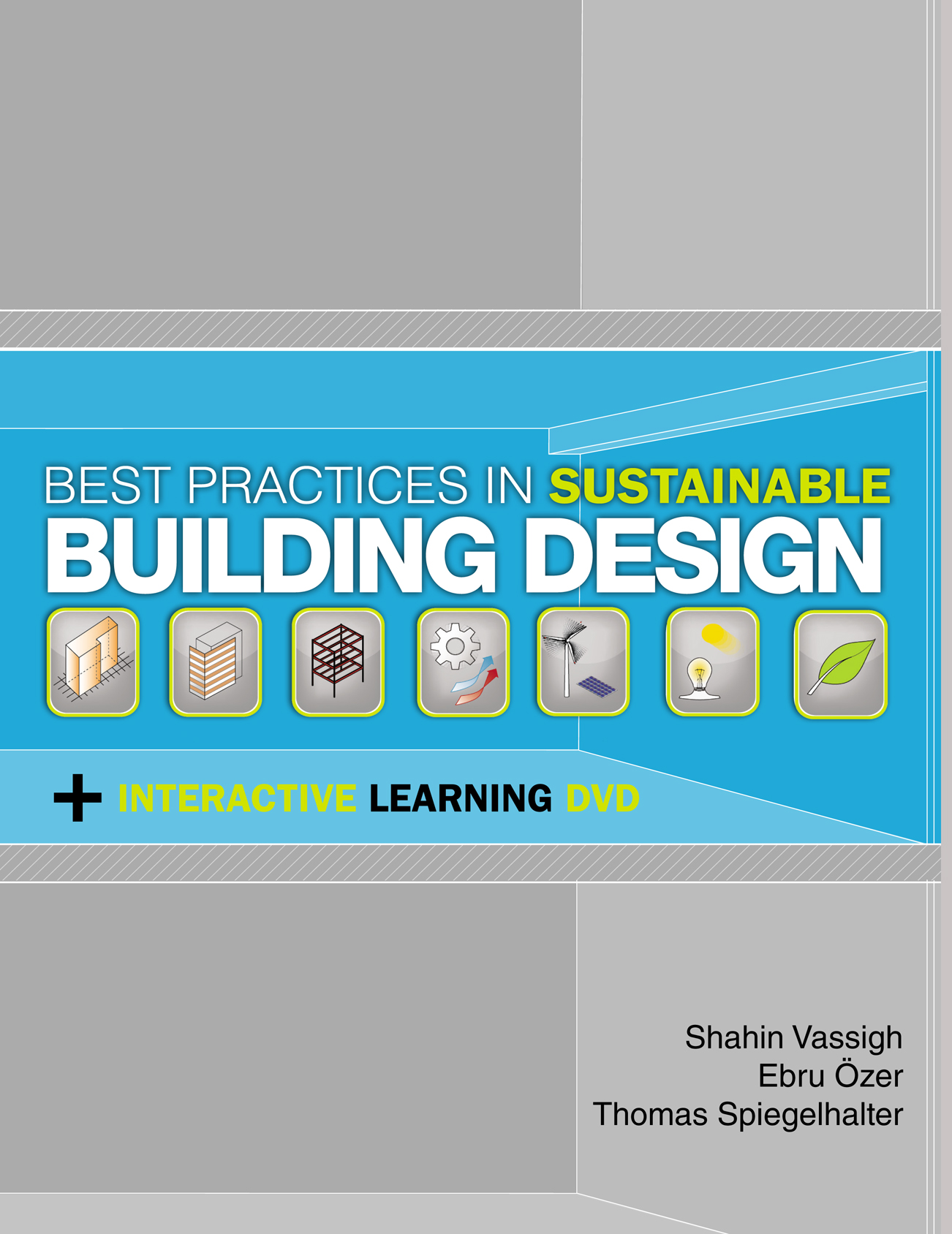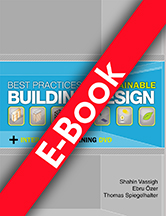Best Practices in Sustainable Building Design
$79.95
Includes an interactive DVD
By Shahin Vassigh, Ebru Özer, and Thomas Spiegelhalter
Hardcover, 8.5 x 11, 272 pages
ISBN: 978-1-60427-068-6
November 2012
Description
This unique book and DVD is an interactive learning environment composed of seven content areas: building form, envelopes, structures, climate control systems, renewable energy, lighting, and landscape design. Each of these content areas is subdivided into learning modules introducing the subject matter and investigates best practices for climate responsive and ecologically sustainable building design and construction. The DVD will help visualize and engage with concepts that may otherwise be too ambiguous or difficult to comprehend in a book format.
Key Features
- Interactive format: Takes advantage of the interactive capabilities of state-of-the-art computing technology including hypertext functionality, animations, and open information referencing
- Highly visual: Demonstrates building sustainability concepts using well detailed, realistic, 3-D computer generated models and interactive animations
- Educational materials serving a variety of learning styles: Combines a traditional textbook format with multimedia graphics and interactive animations, thereby serving both those who learn better through visual media as well as those who prefer reading a textbook
- Interdisciplinary nature: Provides a wide range of information for various disciplines engaged in building design and construction including building envelope, mechanical systems, lighting systems, landscape, and energy resources
About the author(s)
Shahin Vassigh holds a Master of Architecture, a Master of Urban Planning, and a Bachelor of Science in Civil Engineering from the University at Buffalo. Vassigh’s research focuses on structural and architectural design, and on the application of digital media to structural pedagogy and instructional materials. As a civil engineer, Vassigh has worked on structural, hydraulic and transportation related engineering projects throughout New York State. She is currently Associate Professor of Architecture at Florida International University.
Ebru Özer is an Assistant Professor of Landscape Architecture at Florida International University. She holds a Master of Landscape Architecture degree from Louisiana State University and a Bachelor of Architecture degree from Dokuz Eylul University, Turkey. Professor Özer’s research focuses on developing a holistic approach to environmentally sustainable design that integrates current architectural design theories with landscape design theories. Her background also includes an architectural practice in Istanbul, managing a design studio, and working on numerous projects including resort hotels, hospitals, and schools.
Thomas Spiegelhalter is Co-Director of the Environmental and Structural Technology Lab (ESTL) in the Department of Architecture at Florida International University and teaches Sustainability Graduate Studio and Environmental Systems in Architecture. Spiegelhalter has developed numerous solar, zero-fossil-energy and low-energy buildings in Europe and the U.S. Many of his completed projects have been published in international anthologies of architecture such as Architectural Record magazine (Design Vanguard Award 2003) or in the monograph Adaptable Technologies – Le tecnologie adattabili nelle architetture di Thomas Spiegelhalter by Franco Angeli Publisher. He has received 42 honors, prizes and awards for his design work in competitions and applied research at international, national, and academic levels. He has master and bachelor degrees in Design and Architecture from the University of the Arts in Berlin and a Bachelor in Architecture and Engineering from the University of Applied Sciences in Bremen, Germany.
Table of Contents
Acknowledgements
Introduction
1. Building Form
1.1 Concepts
1.2 Plan Shapes
1.3 Climatic Context
2. Building Envelope
2.1 Concepts
2.2 Standard Wall Systems
2.3 Climate Responsive Facades
2.4 Structures
3. Structures
3.1 Structural Materials
3.2 Horizontal Spanning Systems
3.3 Vertical Spanning Systems
3.4 Structural Frames
4. Climate Control Systems
4.1 Concepts
4.2 Passive Systems
4.3 Active Systems
5. Renewable Energy
5.1 Solar Energy
5.2 Photovoltaic System
5.3 Wind Energy
5.4 Geothermal Energy
5.5 Biomass, Hydropower and Hydrogen Energy
5.6 Energy Storage Systems
6. Lighting
6.1 Concepts
6.2 Natural Lighting
6.3 Artificial Lighting
7. Landscape
7.1 Concepts
7.2 Thermal Efficiency
7.3 Hydrological Efficiency
7.4 Case Studies
Bibliography
Index
Reviews
“Best Practices in Sustainable Building Design is clearly structured into learning modules, allowing the reader to quickly grasp the various concepts of passive and active strategies influenced by building form, envelopes, structural system, technical control systems, and other elements. I congratulate the three authors on their marvelous achievement, publishing this work as both a book and an interactive DVD.”
—Steffen Lehmann, UNESCO Chair in Sustainable Urban Development for Asia and the Pacific, and Editor-in-Chief of the Journal of Green Building
“This book is clearly organized and appropriately prioritizes the key issues in the design of sustainable buildings. The writing style is succinct, providing information in a minimum of text, and utilizes the graphics smoothly by providing links to the interactive software. Perhaps the real strength of the platform is the combination of book and software formats. This will be the direction of the future in architectural design and education.”
—Marc Schiler, Professor, School of Architecture, University of Southern California
You may also like…
Related products
-

Geotechnical Engineering Handbook
Retail Price: $129.95$109.95 Add to cart -

Elasticity
Retail Price: $69.95$59.95 Add to cart -

Building Systems Integration for Enhanced Environmental Performance
Retail Price: $89.95$79.95 Add to cart -

Theory of Beam-Columns, Volume 1
Retail Price: $64.95$54.95 Add to cart -

Architectural Acoustics Handbook
Retail Price: $129.95$109.95 Add to cart


